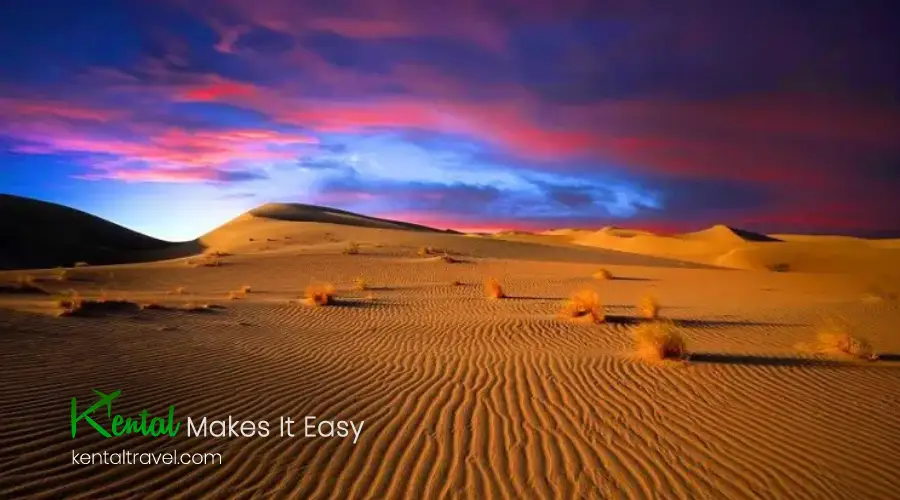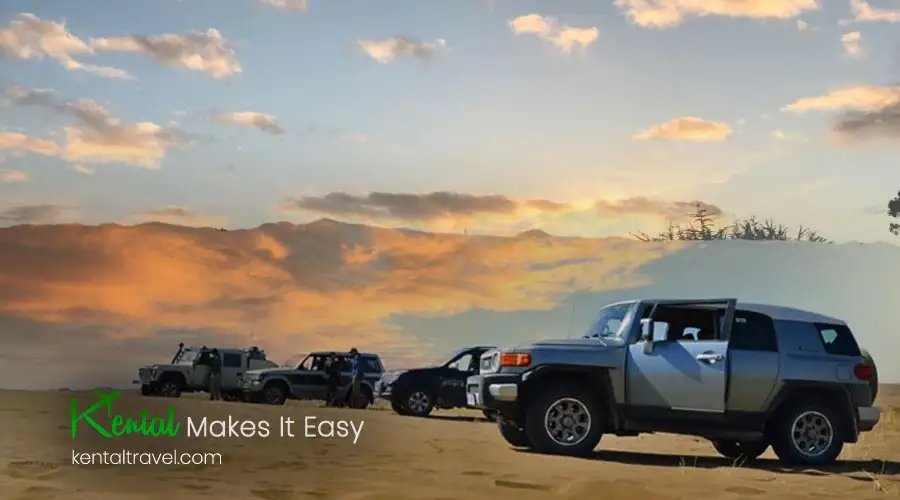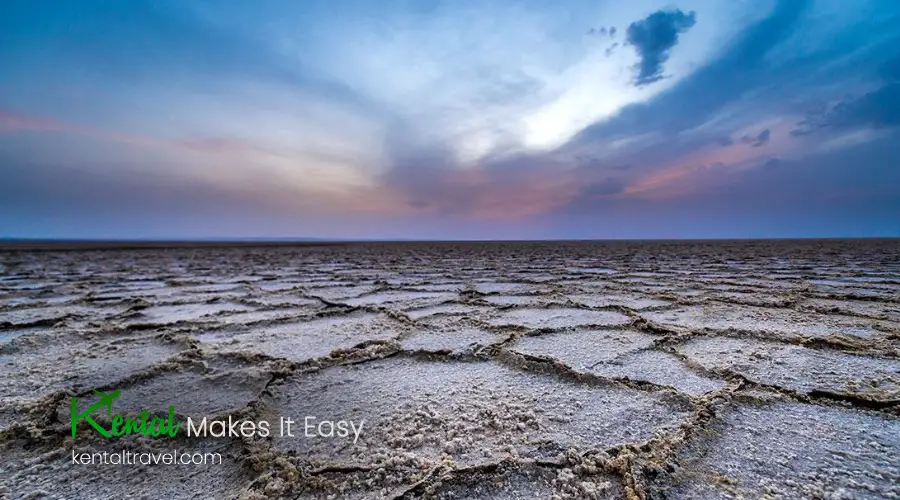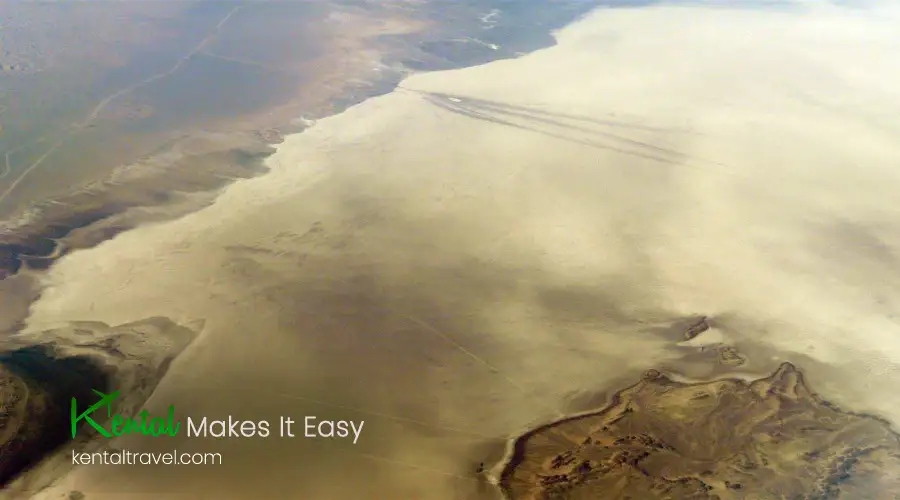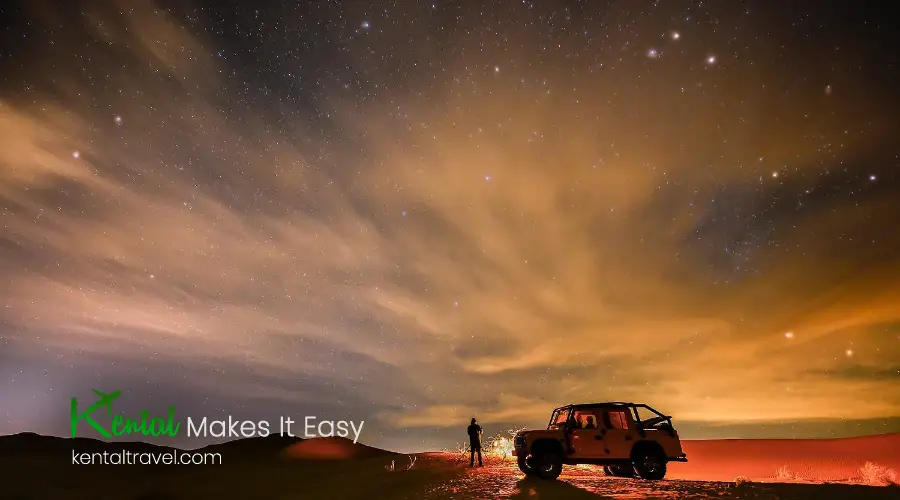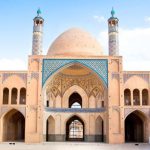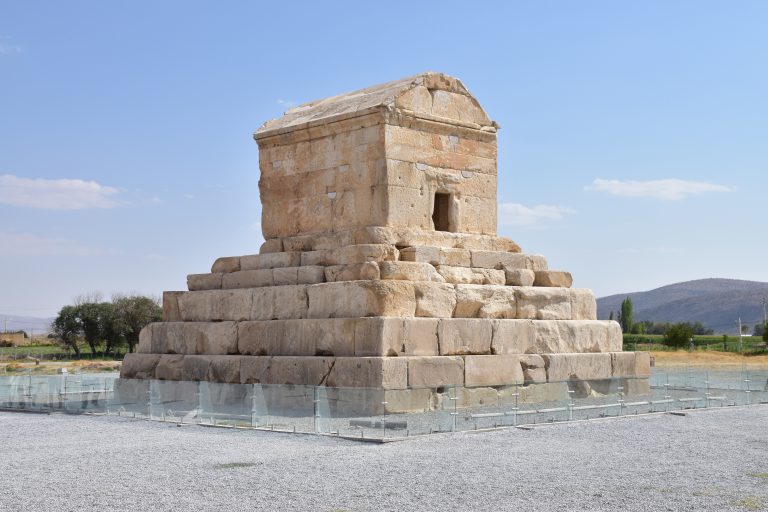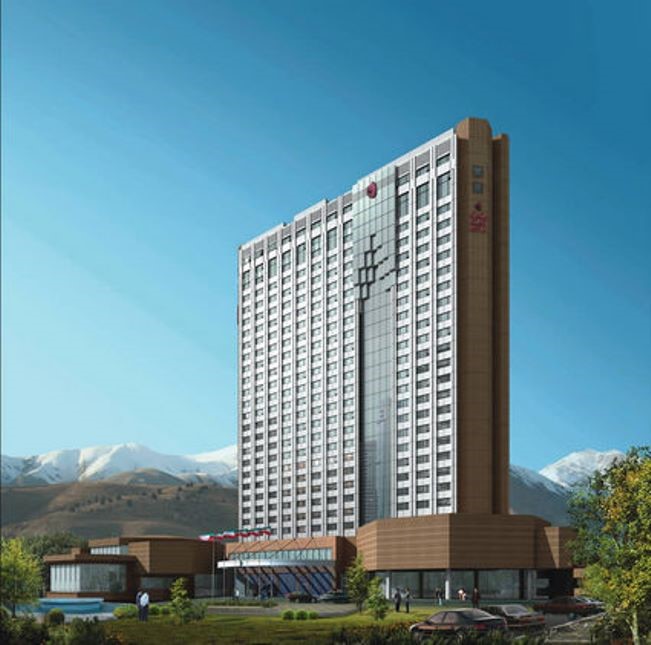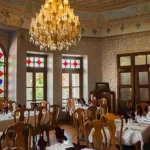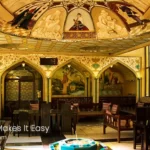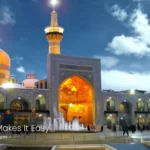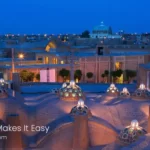Maranjab Desert (Band- Rig Desert) is one of the popular destinations for desert hikers, it is a tourist attraction in Kashan, located in the north of Aran O Bidgol. Maranjab was originally the name of a caravanserai and aqueduct that was built during Abbas the Great period, and after that its surrounding areas became known as Maranjab desert. The average height of Maranjab desert is about 850 meters above the sea level. This desert is mainly covered with sand and sand dunes. Kental, Iran travel agency and tour operator is ready to help you for your trip to Iran from anywhere in the world
Where is Maranjab (Band-e Rig) Desert?
Band-e Rig sand dune area is located in Mesile Hole, south of Namak Lake.
Band-e Rig is one of the dune systems in Iran. Marginal areas of Band-e Rig always face problems of blowing sand transfer due to erosive winds. Based on Nicholas Lancaster, the threshold speed of wind erosion was considered 12 knots. Most of the sand dunes of Band-e Rig are of “active” type, and only a small part in the north and a part in the south have “very active” sand dunes, and in the western margin, only the top of the dunes is active.
Vegetation of Maranjab Desert
Maranjab desert in Kashan is very rich in vegetation. The main vegetation is salt-tolerant plants, such as Tamarisk, Haloxylon, Salix alba, fire bush, Zygophyllum and Smirnovia iranica bushes, which are mostly revived by the General department of natural resources to prevent soil erosion and curb desertification.
Animal Diversity in Maranjab Desert
The animal diversity of the region is very rich due to the abundance of water and food. Among the current animals, these can be mentioned: wolves, jackals, hyenas, rüppell’s foxes, sand cats, monitor lizards, chameleons, lizards, snakes, scorpions, eagles, see-see partridge, and falcons.
This desert is part of the arid and semi-arid regions of the world between 20 and 45 degrees north and south latitudes, and large masses of aeolian sand are concentrated in different places. These sand masses are called Rig or Raml in local dialect.
Maranjab Desert Weather
Maranjab Desert weather can vary depending on the season.
- During the summer months, temperatures can soar to extreme highs, often exceeding 40 degrees Celsius (104 degrees Fahrenheit).
- Spring and autumn tend to offer more moderate temperatures, making them popular times to visit when the weather is milder and more comfortable for outdoor activities.
- Winters, on the other hand, can be quite cold, with temperatures dropping below freezing at night.
Read more: Top 5 Deserts in Iran
It is advisable to check the weather forecast before planning a trip to Maranjab Desert to ensure a pleasant and safe experience.
Historical Sites Around Band-e Rig Desert
Band-e Rig desert has three deserts in its heart:
- Maranjab
- Banderig
- Pusht-e Rig deserts
Salt lake
If you move towards Maranjab desert, you will come across a wide Salt Lake, which has a special environment of silence and peace. In this lake, you can see a flat land covered with salt with geometric patterns of salt blocks, which is the result of the flow of salty water of rivers and floods over thousands of years and has created these shapes after evaporation.
Sargardan Island (Wandering Island)
You can see Sargardan (wandering) island, in salt lake, standing out in the heart of the desert. Sargardan Island or Sargardan Mountain is a volcanic mountain that is seen floating on the water due to vision error and mirage phenomenon. Watching it can be an interesting experience for you.
Maranjab Caravanserai
Along the way to Band-e Rig, you can see desert’s vegetation. Maranjab Caravanserai is another sight of Aran o Bidgol, which stars like a gem in Band-e Rig desert. This caravanserai was built on one of the road branches of the Silk Road during the Safavid era. In recent years, it was renovated by the Ministry of Cultural Heritage so that today we can spend a night in it.
The most attractive part of Band-e Rig desert is its amazing sand dunes, take off your shoes and step on the soft sand of Band-e Rig desert and relax under the desert’s sky. Small and large sand dunes with running sand create a fantastic view in front of your eyes that tempts you to take out your camera and spend some time taking pictures. If you are into sky and the stars, we suggest you stay one night in Band-e Rig desert and enjoy watching the starry sky on a moonlit night.
How to Get your Iran Visa: Iran Visa Application
7 Intresting Activities In Maranjab Desert
Maranjab Desert offers a range of exciting activities for visitors to enjoy. These activities offer an opportunity to connect with nature, seek adventure, and experience the tranquility of the desert environment in Maranjab.
1. Desert Trekking
Explore the vast desert landscape on foot, immersing yourself in the serene surroundings and discovering the hidden wonders of Maranjab.
2. Camel Riding in Maranjab Desert
Experience the traditional mode of transportation in the desert as you ride a camel across the rolling sand dunes, enjoying the rhythmic sway and taking in panoramic views.
3. Sandboarding
Ride the sandy slopes on a sandboard, gliding down the dunes for an exhilarating adventure and an adrenaline rush.
4. Camping in Band-e Rig Desert
Spend a night under the starry desert sky by setting up camp in Maranjab. Enjoy the tranquility, peacefulness, and the captivating beauty of the desert at night.
5. Stargazing
With minimal light pollution, Maranjab Desert provides an ideal setting for stargazing. Marvel at the vast expanse of stars and constellations that adorn the night sky.
6. Visit Maranjab Lake
Explore the picturesque salt lake of Maranjab, known for its unique beauty and the reflection of the surrounding desert landscape.
7. Photography of Maranjab Desert
Capture the stunning vistas, golden dunes, and unique flora and fauna of Maranjab Desert, creating lasting memories and beautiful images.
Maranjab Desert Facts
Here are some interesting facts about Maranjab Desert:
- Location: Maranjab Desert is located in the central part of Iran, specifically in the Isfahan province.
- Size: It covers an area of approximately 1,800 square kilometers (700 square miles).
- Unique Landscapes: Maranjab Desert features a diverse range of landscapes, including vast sand dunes, salt flats, and a mesmerizing salt lake known as Maranjab Lake.
- Accessibility: It is easily accessible from the city of Kashan, which is approximately 60 kilometers (37 miles) away.
- Biodiversity: Despite its arid environment, Maranjab Desert is home to a surprising variety of plant and animal species, including desert foxes, Persian gazelles, and various bird species.
- Ancient Caravanserai: The desert is home to the historic Shah Abbasi Caravanserai, which served as a pit stop for travelers and merchants on the Silk Road.
- Stargazing Haven: Maranjab Desert’s remote location and lack of light pollution make it an ideal spot for stargazing, offering breathtaking views of the night sky.
- Tourism and Activities: The desert attracts tourists seeking adventure and tranquility. Activities like desert trekking, sandboarding, camel riding, and camping are popular among visitors.
- Cultural Significance: Maranjab Desert has historical and cultural significance, as it was once a vital trading route connecting central Iran to the Silk Road.
- Environmental Challenges: Like many deserts, Maranjab is facing environmental challenges, including desertification and water scarcity. Efforts are being made to preserve and protect this unique ecosystem.
These facts highlight the natural beauty, cultural heritage, and ecological importance of Maranjab Desert, making it an intriguing destination for travelers and nature enthusiasts alike. If you’ve decided to have a journey in Iran deserts, read guide to Iran deserts for more information.
Conclusion
In conclusion, Maranjab Desert in Iran is a captivating destination that offers a surreal landscape, thrilling adventures, and a sense of tranquility for those seeking a remarkable experience in the heart of nature.

